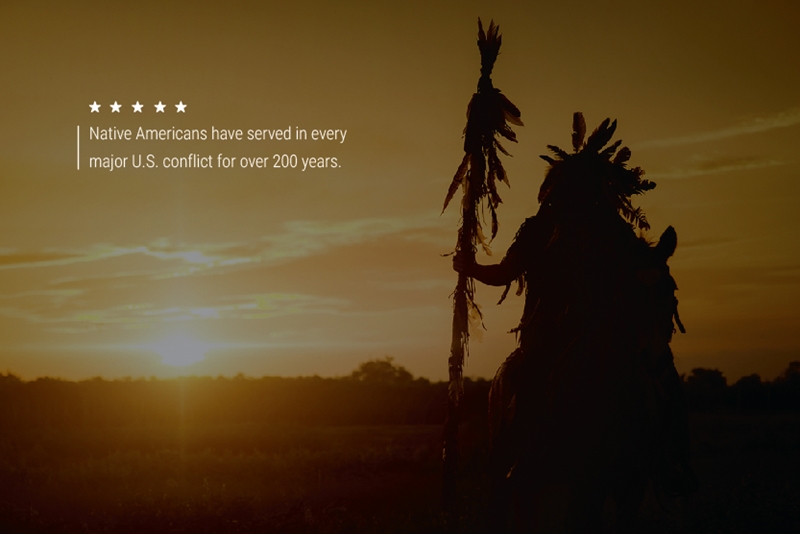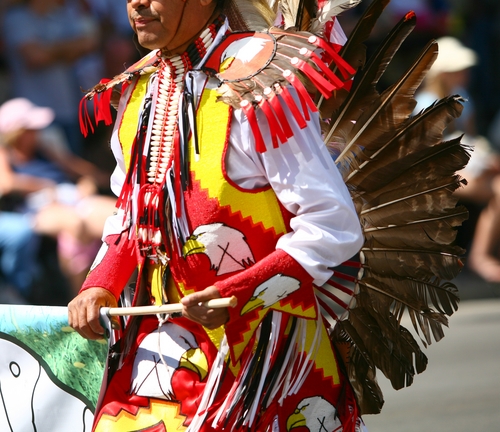A growing number of cities and states are celebrating Indigenous Peoples Day, created to highlight the legacy of Native Americans. Falling on the second Monday in October (this year, Oct. 9), Indigenous Peoples Day was first recognized in 1992 by the state of South Dakota and the city of Berkeley, California. It has since spread to include Los Angeles, Seattle, Minneapolis, Phoenix, Denver and the states of Alaska and Vermont, in addition to other places.
This Oct. 9, we'd like to celebrate Indigenous Peoples Day and reflect on the great achievements our current and former native servicemembers brought to this country.
An indigenous history of the U.S. military

Writing for the Huffington Post, Kevin Gover, a citizen of the Pawnee Tribe of Oklahoma and Director of the Smithsonian National Museum of the American Indian, shed light on the impact Native Americans have had on the U.S. military. Members of this group have served in every major American conflict for over 200 years and have joined the military in greater numbers per capita than any other ethnicity. This means they served even before they were given the legal to right to vote as American citizens, displaying an honorable dedication.
In fact, as Indian Country Today pointed out, American Indians served as volunteers throughout much of their history with the military. The WWI code talkers and other servicemembers couldn't have been drafted as they weren't considered U.S. citizens. They weren't granted such status until the Nationalities Act of 1940 amended earlier citizenship and immigration law. Once they had the option, 99 percent of all eligible native men registered for the draft by January of 1942.
"The code talkers are arguably the most famous example of American Indians serving in the military."
The code talkers of World Wars I and II are arguably the most famous example of American Indians serving in the military. Their native languages were incredibly valuable, helping American forces exchange information without it being decoded by the enemy. Cryptography was another option, and while the practice of encoding and decoding messages was certainly useful, it was also time-consuming, and such codes could be broken. The strength of Native American languages was that only a select number of people could speak them. What's more, only a few of the languages were ever written down, meaning the only people who could translate them were native speakers.
Additionally, Native American sometimes had to put their dedication to the U.S. against the best interest of their native nations. For example, they served on both Confederate and Union sides of the Civil War, knowing whichever was the victor would determine the fate of their people in addition to slavery.
Notable Native American servicemembers
Though their actual numbers have been smaller than other ethic groups, Native Americans in the military have certainly accomplished enough to achieve recognition. In fact, a member of the Pawnee nation was the first American Indian to be awarded the Congressional Medal of Honor. This happened in 1869, just eight years after the honor was first established.
Since then, a number of Native Americans have received the medal. One of the most recent was Master Sergeant Woodrow Wilson Keeble, a WWII and Korean War veteran of a Sioux tribe known as the Sisseton Wahpeton Oyate of the Lake Traverse Reservation, according to the California Indian Education organization. Master Sergeant Keeble received his medal approximately 16 years after his death, awarded by President George W. Bush in 2008.
Another notable Native American serviceman was Private First Class Charles George, a Cherokee from North Carolina. George also received the Medal of Honor posthumously, having thrown his body on a grenade to save his comrades. Such acts of selflessness are common among American Indian and Alaskan Native servicemembers, and it would take an entire book to honor them all. That, in essence, is why it is important to remember their sacrifice this Indigenous Peoples Day.

